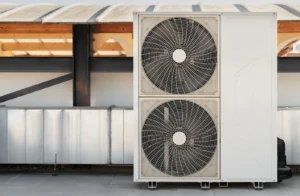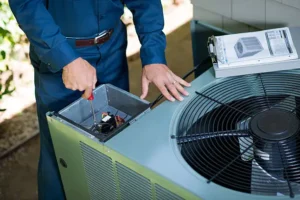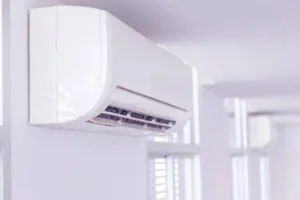Summary: When washing your clothes, nothing is worse than hearing a persistent smashing and crashing from your appliance as it tries to spin. Even the most expensive washing machine can experience this issue. It can happen for many reasons and depending on the severity, it can range from minor shaking up to banging as your appliance throws itself around. The shaking of your washing machine shouldn’t be taken for granted, as it can damage both the washer and the flooring. There are certain reasons why this happens, and this blog post will reveal how to fix them.
Outline:
- Uneven Distribution of Weight
- Your Washing Machine is Uneven
- Transit Bolts are Not Removed
- Congested Filter
- Something is Damaged or Broken
- How to Prevent Your Washing Machine from Vibrating
- Even Out the Load
- Even Out the Water
- Get Rid of the Transit Bolts
- Regularly Clean the Filter
- Call a Professional Appliance Repair
Uneven Distribution of Weight
Does your washer only vibrate occasionally? This is commonly caused by uneven weight distribution in the drum. The vibration is usually triggered when you wash large items like a pillow or a blanket and wrap them around the load to form a big heavy ball. As your washer tries to spin, the load is continually thrown in the drum at a speed that makes your appliance shake.
Some washing machines come with state-of-the-art features that detect if the shaking is caused by the weight. They automatically delay the spin cycle until the weight is properly distributed. That is why sometimes, you find the load still sopping wet when you open the washer door. However, some models will force a spin that can cause damage both to the floor and your machine. Once your washer reaches its full cycle speed, it is less likely to shake; however, the issue might persist once it slows down or picks up speed to spin once more.
Your Washing Machine is Uneven
Does your washer continuously vibrate with daily loads? Do you notice it shaking with every cycle as it builds up to spin? These are common tell-tale signs of unevenness. Use a spirit level or manually tip the appliance from side to side with some pressure to confirm this.
Transit Bolts are Not Removed
A vibrating washing machine can also be caused by the transit bolts. These components are used in the transportation of the appliance to keep the drum in place. Failure to remove them on installation can cause a tough racket as your machine spins. Worse, they can damage the concrete block that holds your appliance down.
Congested Filter
Shaking can also happen because of the blocked filter, which is intended to catch anything that washes out your garments and stops them from coming into the water hose. If metal is detected in the filter, like coins or pins, you can expect an odd noise throughout the cycle.
Something is Damaged or Broken
Vibrating or shaking is also a sign of damage to your machine. Any torn components, from the shock absorbers to the pads and suspension rods, could cause it to vibrate aggressively.
How to Prevent Your Washing Machine from Vibrating
Even Out the Load
When washing a pillow, add another one or some blankets or towels to bulk out the weight. This will assist in spinning as the machine picks up momentum. If your washer fails to turn, squeeze out the excess water and distribute the weight before returning it to the drum, and run a spin-only cycle.

Even Out the Water
If your washing machine is not even, you must adjust the feet to make it stable. Start by disconnecting the washer, water, and power. Then, pull it out of its bay with the help of a family member. Examine the flooring to know if there is damage. Also, ensure that the foot pads are not damaged or loose. The rubber pads, which you can find under the machine’s feet, help to lessen the shaking. Replace them when needed.
Using a spirit level is another way to check if the washer is still uneven. Tipping it manually from side to side can also help confirm if it is balanced. If the feet require adjusting, loosen the lock nuts on every foot with the help of a wrench. Rotate the bolts clockwise and counterclockwise to lower that spot. Leave the spirit level on top. Once the washing machine is even, tighten the lock nuts to secure it. You can further test out the evenness by doing a quick wash.
Get Rid of the Transit Bolts
Eliminating transit bolts must be done on installation. Check the rear of the machine, and you will see large bolts that surround where the external part of the drum would be. These bolts need to be gotten rid of using a wrench before running the washer. However, don’t throw them, as you will need them should you want to move your appliance. Your washing machine may also be equipped with plastic caps to fill the holes afterwards. Follow the manual for instructions.
Clean the Filter on a Regular Basis
Got a blocked filter? The good news is it’s easy to resolve. The filter is installed behind the small panel at the bottom of the washing machine. All you need to do is turn off the machine, open the panel, and hold a thin dish under the dial or hose. Slowly loosen and drain—this may take some trip to the sink. When done, you can remove the filter to collect and sweep away any debris. Ensure there are no particles left behind the filter before replacing it.
Call a Professional Appliance Repair
If all else fails and you believe something is broken in your washing machine, then it is time to contact a reliable appliance repair company. On Point Service Company is the one to call if you live in Waco, TX. We offer reliable and affordable appliance repair services. What’s more, we are also experts in air conditioner repair services.
Call us now to know how we can help you!







